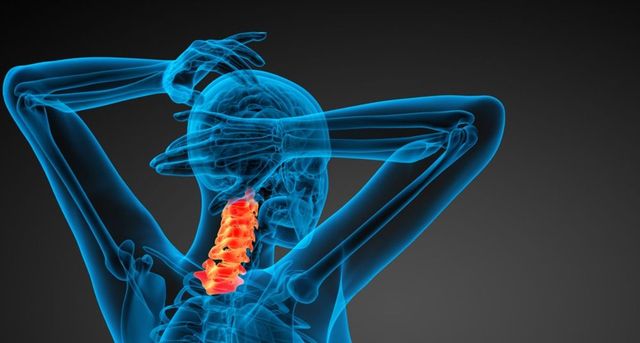The Benefits of Spinal Decompression: Just How It Advertises Recovery and Pain Alleviation
Spinal decompression therapy has actually emerged as a significant approach to reducing discomfort and promoting recovery. It runs by carefully relieving pressure on the back, which can bring about enhanced blood circulation and minimized swelling. These benefits are vital for recuperation from numerous spinal problems. However, the full extent of its advantages and the different populaces that might benefit from this therapy warrant better exploration. What else can this therapy offer?
Recognizing Spinal Decompression Therapy
Spinal decompression therapy is a non-invasive therapy choice made to reduce pressure on the spinal column and bordering frameworks. This treatment primarily targets conditions such as herniated discs, sciatica, and chronic neck and back pain. By carefully extending the back, it intends to develop adverse stress within the discs, which can aid to rearrange bulging discs and alleviate nerve compression. Clients commonly seek this method as an option to medical treatments, looking for relief without the linked risks and recovery time.

Mechanism of Action: Just How Spinal Decompression Works
Spinal decompression therapy runs via numerous essential mechanisms. It lowers stress on spinal discs, which can minimize pain and advertise healing. Additionally, boosted blood flow and nerve origin decompression contribute to improved overall spinal health and wellness.
Stress Reduction on Discs
When pressure on the intervertebral discs increases due to misalignment or injury, it can bring about discomfort and discomfort. Spinal decompression therapy intends to minimize this stress through a controlled, gentle extending of the back. By developing negative pressure within the discs, the therapy promotes the repositioning of herniated or bulging discs, enabling them to go back to their all-natural state. This decrease in pressure helps to soothe nerve compression, which can be a source of pain. As the discs are unwinded, they can soak up extra fluids and nutrients, advertising healing. This mechanism not only help in minimizing pain however also enhances the general function of the back, providing individuals with a path towards healing and boosted high quality of life.
Boosted Blood Circulation
The procedure of spinal decompression not just minimizes pressure on the intervertebral discs but additionally enhances blood flow throughout the back and surrounding cells. By creating an unfavorable stress atmosphere within the spinal column, spinal decompression treatment helps with the increase of nutrient-rich blood to the influenced locations. This boosted flow delivers critical oxygen and nutrients while promoting the elimination of metabolic waste products. The recovery procedure is accelerated, supporting tissue fixing and lowering inflammation. Enhanced blood flow likewise adds to the overall health of spinal frameworks, consisting of muscles and ligaments, which can better reduce discomfort. Spinal decompression offers as an important device for cultivating boosted circulation, necessary for ideal recovery and lasting spinal wellness.
Nerve Origin Decompression
Nerve root decompression is an essential facet of spinal decompression treatment, targeting the alleviation of pressure on spinal nerves. This therapeutic method employs mechanical or hand-operated methods to create area within the spine, therefore decreasing the compression on nerve origins that can cause tingling, weak point, or discomfort. By gently stretching the spine, it promotes the rehydration of intervertebral discs and improves blood flow to impacted areas. This improved flow promotes the shipment of necessary nutrients and oxygen to injured cells, assisting in the recovery process. As pressure diminishes, nerve function typically enhances, causing minimized discomfort and boosted wheelchair for individuals experiencing conditions like herniated discs or spinal constriction. In general, nerve root decompression plays a crucial function in spinal health.
Discomfort Relief Advantages of Spinal Decompression
Although many people look for numerous treatments for persistent neck and back pain, spinal decompression treatment stands apart as a reliable choice. This non-surgical method aims to alleviate discomfort by carefully stretching the spine, which can soothe pressure on intervertebral discs and bordering tissues. As an outcome, it helps with the retraction of herniated or protruding discs, promoting a much more beneficial environment for healing.
Patients often report considerable discomfort alleviation adhering to spinal decompression therapy, as it can enhance blood circulation and nutrient exchange in the affected locations. This raised circulation helps in reducing inflammation and accelerates the body's natural healing processes. In addition, the treatment might alleviate involved signs such as radiculopathy, sciatic nerve pain, and muscle tension, contributing to a total renovation in lifestyle (Chiropractor). By providing targeted alleviation, spinal decompression treatment acts as a beneficial alternative for those looking for efficient administration of persistent neck and back pain
Enhancing Movement and Adaptability
As individuals undertake spinal decompression therapy, they usually experience boosted movement and versatility in addition to discomfort relief. This treatment functions by gently extending the spinal column, which lowers stress on the surrounding nerves and spinal discs. As the discs reclaim their natural shape and placement, people regularly report enhanced series of motion and decreased rigidity in the back and neck.
This newly found movement permits them to take part in everyday activities a lot more pleasantly, whether it be bending, training, or getting involved in exercises. Enhanced versatility can additionally add to far better position, which even more relieves pressure on the back.

Supporting Natural Healing Processes
Spinal decompression therapy not only reduces discomfort however additionally promotes the body's natural recovery procedures. By gently extending the back, this treatment produces negative stress within the intervertebral discs, which can promote the activity of nutrients, oxygen, and hydration to damaged cells. This influx of crucial aspects encourages mobile repair and regeneration, enhancing total spinal wellness.
Additionally, spinal decompression aids to alleviate nerve compression, which Family Chiropractic can lead to inflammation and pain. As stress is spared surrounding nerves, the body can start to recover itself more successfully - Family Chiropractic. Boosted blood flow throughout the spinal area more supports healing by getting rid of and supplying important nutrients waste products
The decrease of stress in the spinal structures can lead to lowered muscle spasms and enhanced total feature. Eventually, spinal decompression treatment cultivates an environment where the body can restore equilibrium, advertising lasting recuperation and wellness.
Who Can Take Advantage Of Spinal Decompression Treatment
Who stands to acquire from spinal decompression therapy? People struggling with persistent neck and back pain, herniated discs, or sciatic nerve pain can experience significant remedy for this therapy. Individuals with degenerative disc condition or spinal stenosis might also find valuable end results, as decompression treatment aims to reduce stress on spinal nerves. Those recovering from spinal surgical treatment or injuries can utilize this therapy to improve recovery and recover wheelchair.
Athletes and energetic people experiencing muscle mass stress or disc-related discomfort might include spinal decompression as part of their recovery program. Furthermore, older adults with age-related spinal issues can take advantage of the mild grip associated with this therapy. Overall, spinal decompression therapy is a flexible treatment alternative appropriate for a varied series of patients looking for non-invasive pain relief and improved spinal wellness.
Often Asked Questions
The length of time Does a Typical Spinal Decompression Session Last?
A common spinal decompression session lasts between 30 to 45 minutes. The period may differ based on individual needs and therapy procedures, ensuring that individuals obtain ideal care customized to their specific problems and responses.
Are There Any Adverse Effects of Spinal Decompression Treatment?
Spinal decompression therapy might cause mild negative effects such as short-lived discomfort, muscle spasms, or pain. These impacts are usually short-term, and most individuals experience substantial alleviation and enhancement in their problem over time.
Can Spinal Decompression Be Done at Home?
Spinal decompression can be executed at home using particular tools or methods, such as inversion tables or extending workouts. However, seeking advice from a medical care expert for guidance is advised to assure security and effectiveness throughout the procedure.
The Amount Of Procedure Are Usually Required for Reliable Outcomes?
Usually, individuals may call for 10 to 20 sessions of spinal decompression therapy to achieve efficient outcomes. The precise number can differ based upon individual conditions, therapy actions, and details recommendations from health care specialists.
Is Spinal Decompression Safe for Expecting Females?
Spinal decompression is normally taken into consideration risk-free for pregnant women, but consultation with a healthcare specialist is crucial. Private conditions vary, and expert guidance assurances proper therapy tailored to the particular requirements of the anticipating mom.
Spinal decompression therapy has emerged as a remarkable method to relieving pain and promoting healing. By producing an unfavorable pressure atmosphere within the spinal column, spinal decompression treatment promotes the influx of nutrient-rich blood to the affected areas. Nerve origin decompression is a basic aspect of spinal decompression treatment, targeting the alleviation of pressure on spinal nerves. As individuals go through spinal decompression therapy, they often experience enhanced movement and versatility in addition to discomfort alleviation. Individuals with degenerative disc disease or spinal constriction might also find helpful results, as decompression therapy intends to ease stress on spinal nerves.